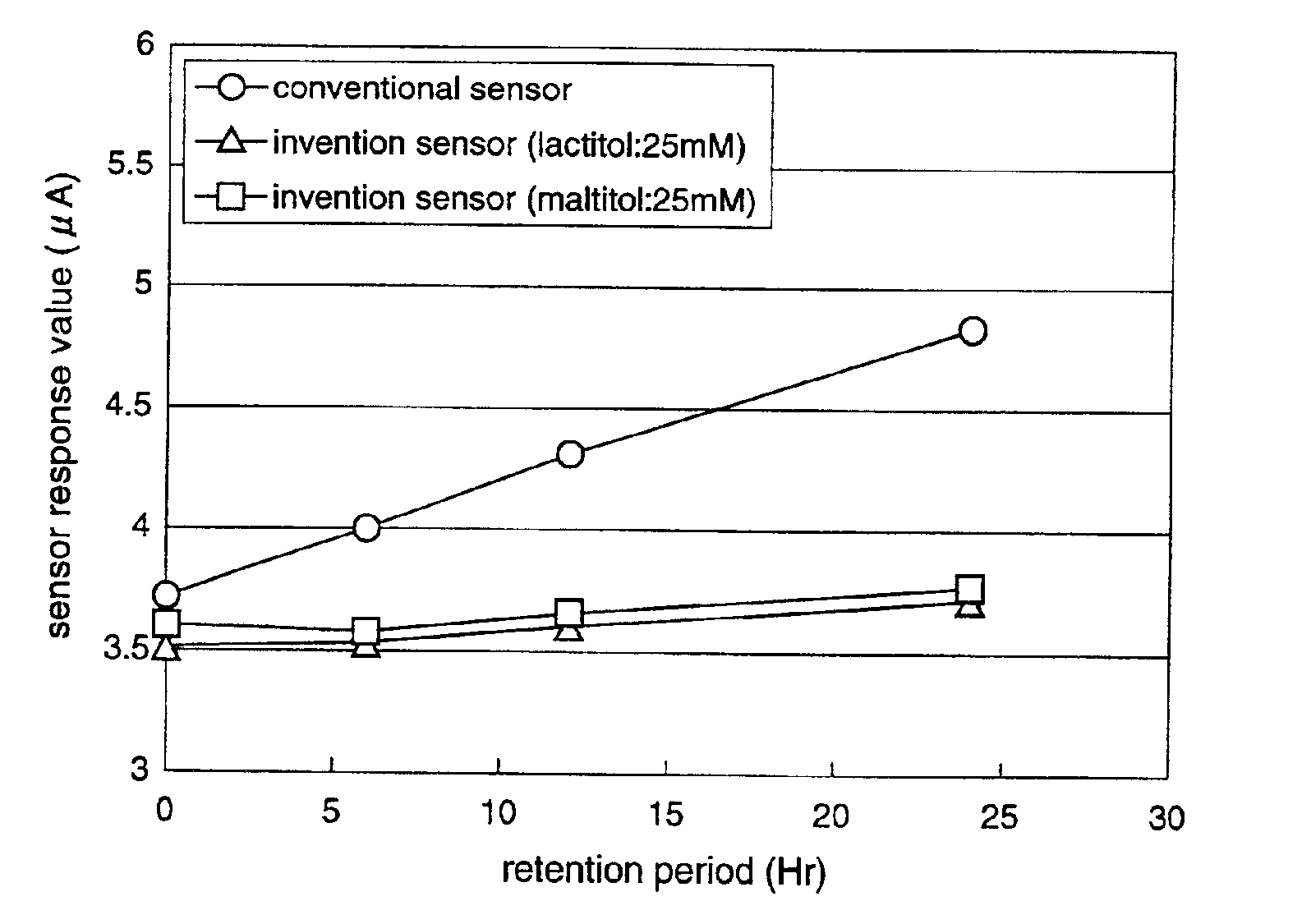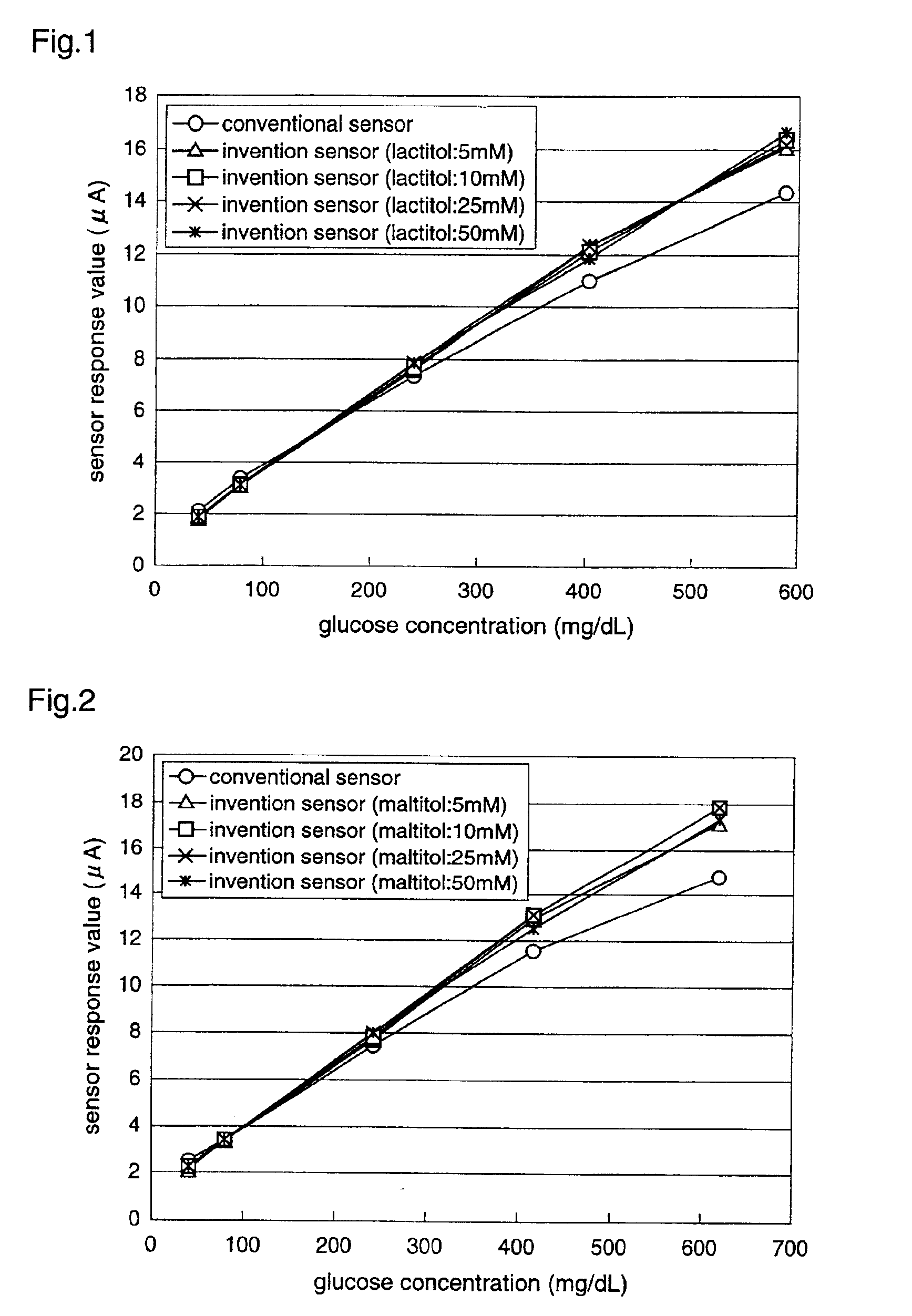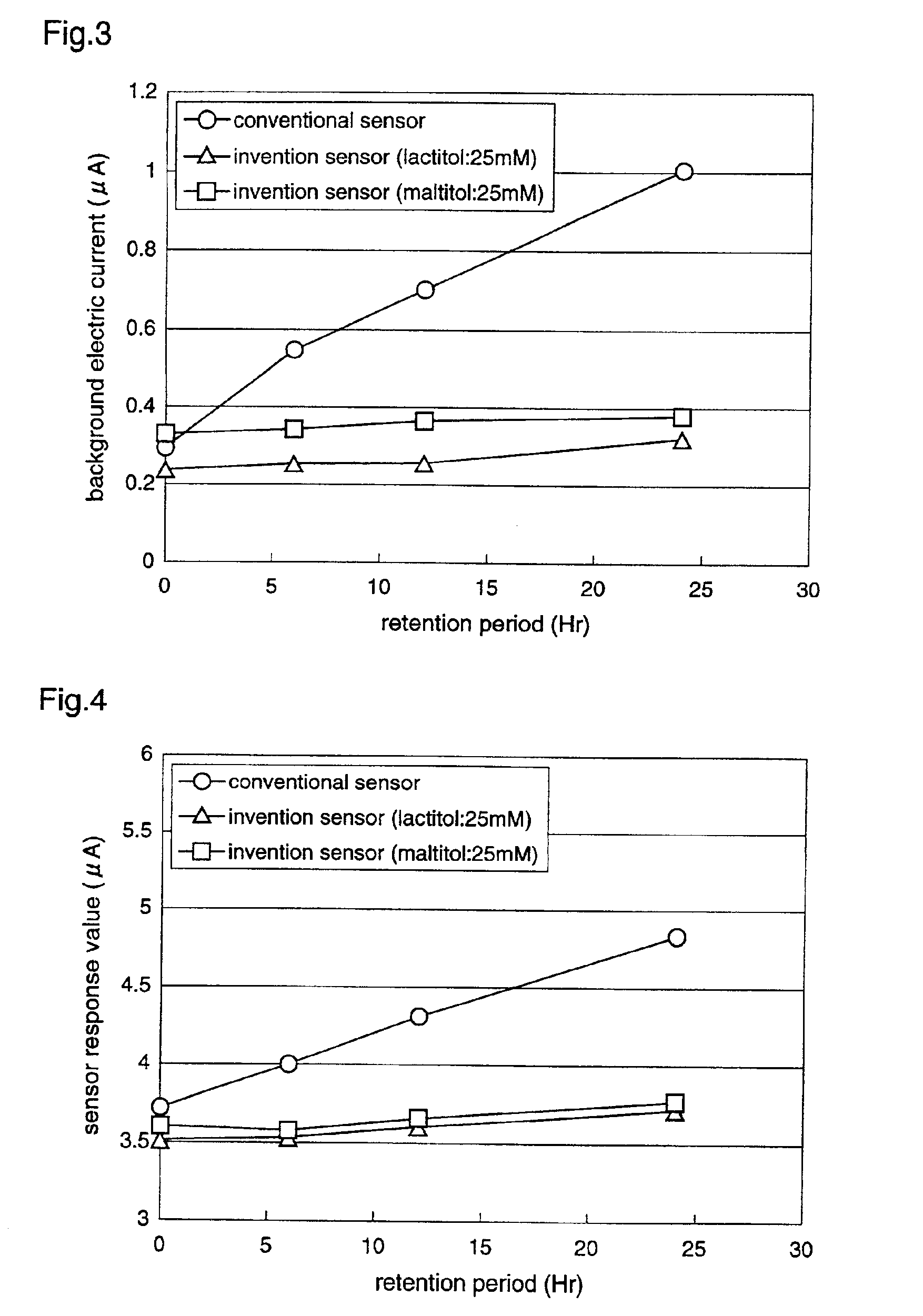Biosensor
a biosensor and sensor technology, applied in the field of biosensors, can solve the problems of deteriorating the performance of the sensor, difficult to keep the preservation container free of moisture penetration, and inability to completely eliminate the remaining water of molecular level in the biosensor reagent, etc., to achieve the effect of facilitating the formation of homogeneous reagents on the surface of electrodes, excellent stability and high respons
- Summary
- Abstract
- Description
- Claims
- Application Information
AI Technical Summary
Benefits of technology
Problems solved by technology
Method used
Image
Examples
embodiment 1
(Embodiment 1)
[0049]Hereinafter, a biosensor according to a first embodiment of the present invention will be described. In the respective embodiments of the invention described below, an enzyme sensor, which employs an enzyme as a molecular recognition element that specifically reacts to a specific substance in a sample solution, is exemplified.
[0050]FIG. 11 exemplifies an exploded perspective view of a three-electrode-system biosensor, and FIG. 12 exemplifies an exploded perspective view of a two-electrode-system biosensor. In FIGS. 11 and 12, numeral 1 or 101 denotes an insulating support, on which a working electrode 2 or 102 and a counter electrode 3 or 103 are formed at prescribed positions in prescribed shapes. Further, in the three-electrode-system biosensor shown in FIG. 11, a detecting electrode 4 is formed on the insulating support 1 at a prescribed position in a prescribed shape. The detecting electrode 4 here serves as an electrode for detecting shortage of a specimen q...
embodiment 2
(Embodiment 2)
[0068]Hereinafter, a biosensor according to a second embodiment of the present invention will be described.
[0069]The biosensor according to the second embodiment of the invention is the biosensor shown in FIG. 11 or 12 whose reagent layer 5 or 105 is formed of an enzyme, an electron transfer agent, a hydrophilic polymer, and a metallic salt. Other constituents are the same as those of the above-described biosensor according to the first embodiment and, therefore, descriptions thereof will be omitted.
[0070]The second embodiment of the invention is characterized by that a metallic salt is included in the reagent layer 5 or 105, and the metallic salt prevents that the oxidized-form electron transfer agent gets contact with a part of a reactive functional group existing in enzyme protein and hydrophilic polymer included in the reagent, so that the electron transfer agent is denatured (reduced) from the oxidized form to reduced form in the reagent layer 5 or 105 formed on t...
embodiment 3
(Embodiment 3)
[0075]Hereinafter, a biosensor according to a third embodiment of the present invention will be described.
[0076]The biosensor according to the third embodiment of the invention has a reagent layer 5 or 105 shown in FIG. 11 or 12, which is formed of an enzyme, an electron transfer agent, a hydrophilic polymer, and an organic acid or organic acid salt which has at least one carboxyl group in a molecule. Other constituents are the same as those of the above-described biosensor according to the first embodiment and, therefore, descriptions thereof will be omitted.
[0077]The third embodiment of the invention is characterized by that an organic acid or organic acid salt having at least one carboxyl group in a molecule is included in the reagent layer 5 or 105, and the organic acid or organic acid salt prevents that the oxidized-form electron transfer agent gets contact with a part of a reactive functional group existing in enzyme protein and hydrophilic polymer included in th...
PUM
| Property | Measurement | Unit |
|---|---|---|
| Concentration | aaaaa | aaaaa |
| Area | aaaaa | aaaaa |
| Hydrophilicity | aaaaa | aaaaa |
Abstract
Description
Claims
Application Information
 Login to View More
Login to View More - R&D
- Intellectual Property
- Life Sciences
- Materials
- Tech Scout
- Unparalleled Data Quality
- Higher Quality Content
- 60% Fewer Hallucinations
Browse by: Latest US Patents, China's latest patents, Technical Efficacy Thesaurus, Application Domain, Technology Topic, Popular Technical Reports.
© 2025 PatSnap. All rights reserved.Legal|Privacy policy|Modern Slavery Act Transparency Statement|Sitemap|About US| Contact US: help@patsnap.com



